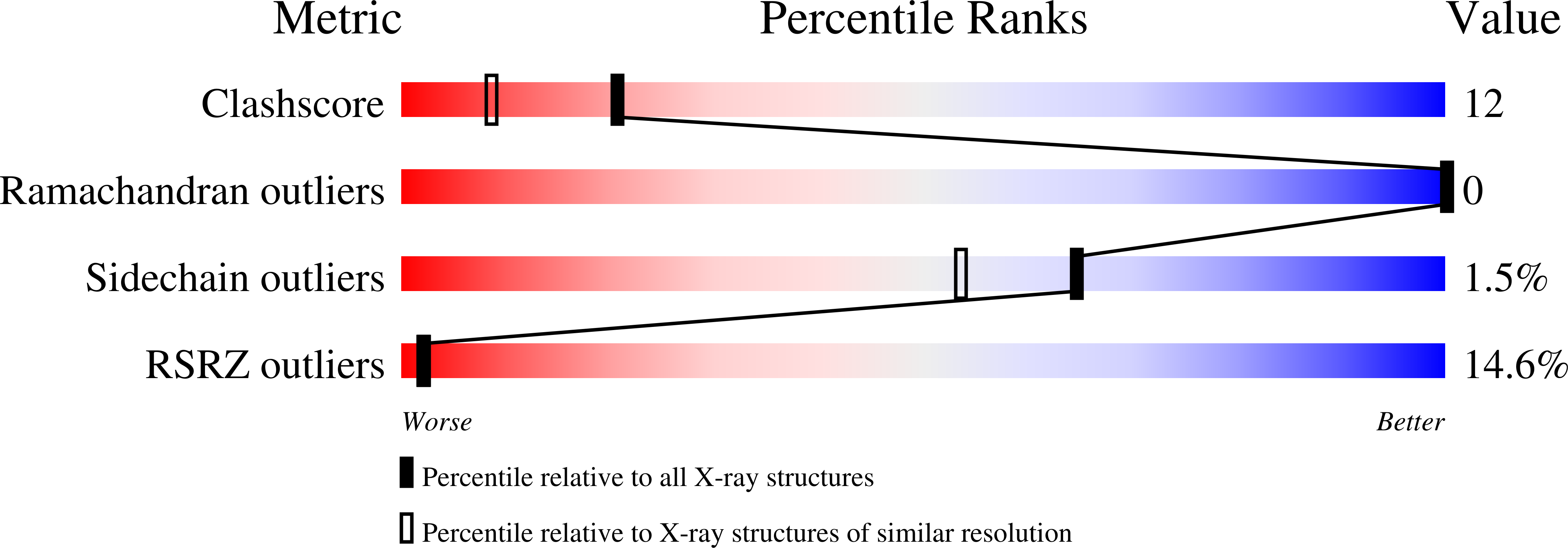Structural Basis of Udp-Galactose Binding by Alpha- 1,3-Galactosyltransferase (Alpha3Gt): Role of Negative Charge on Aspartic Acid 316 in Structure and Activity.
Tumbale, P., Jamaluddin, H., Thiyagarajan, N., Brew, K., Acharya, K.R.(2008) Biochemistry 47: 8711
- PubMed: 18651752
- DOI: https://doi.org/10.1021/bi800852a
- Primary Citation of Related Structures:
2VS3, 2VS4, 2VS5 - PubMed Abstract:
alpha-1,3-Galactosyltransferase (alpha3GT) catalyzes the transfer of galactose from UDP-galactose to form an alpha 1-3 link with beta-linked galactosides; it is part of a family of homologous retaining glycosyltransferases that includes the histo-blood group A and B glycosyltransferases, Forssman glycolipid synthase, iGb3 synthase, and some uncharacterized prokaryotic glycosyltransferases. In mammals, the presence or absence of active forms of these enzymes results in antigenic differences between individuals and species that modulate the interplay between the immune system and pathogens. The catalytic mechanism of alpha3GT is controversial, but the structure of an enzyme complex with the donor substrate could illuminate both this and the basis of donor substrate specificity. We report here the structure of the complex of a low-activity mutant alpha3GT with UDP-galactose (UDP-gal) exhibiting a bent configuration stabilized by interactions of the galactose with multiple residues in the enzyme including those in a highly conserved region (His315 to Ser318). Analysis of the properties of mutants containing substitutions for these residues shows that catalytic activity is strongly affected by His315 and Asp316. The negative charge of Asp316 is crucial for catalytic activity, and structural studies of two mutants show that its interaction with Arg202 is needed for an active site structure that facilitates the binding of UDP-gal in a catalytically competent conformation.
Organizational Affiliation:
Department of Biomedical Science, Florida Atlantic University, 777 Glades Road, Boca Raton, Florida 33431, USA.



















